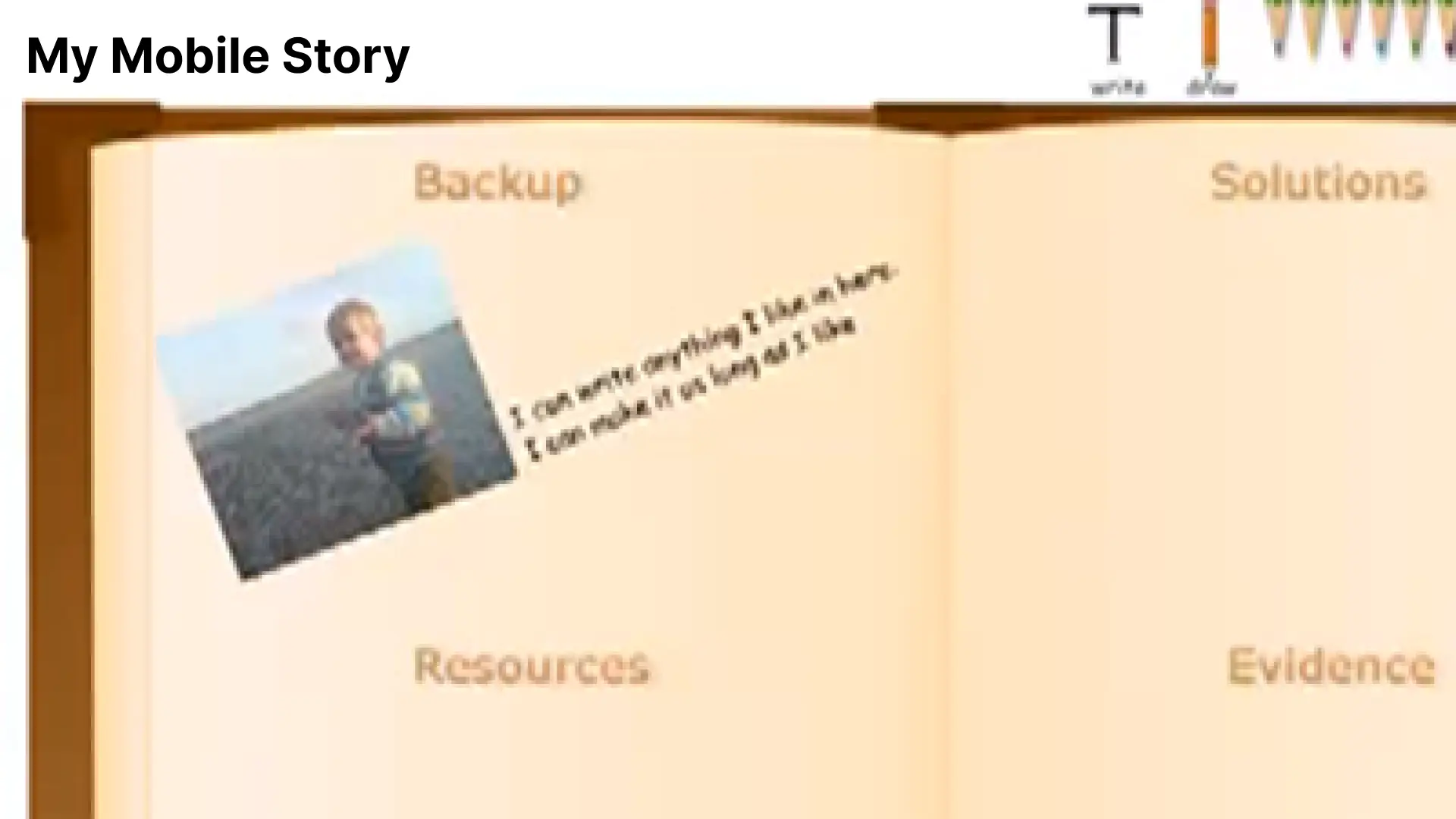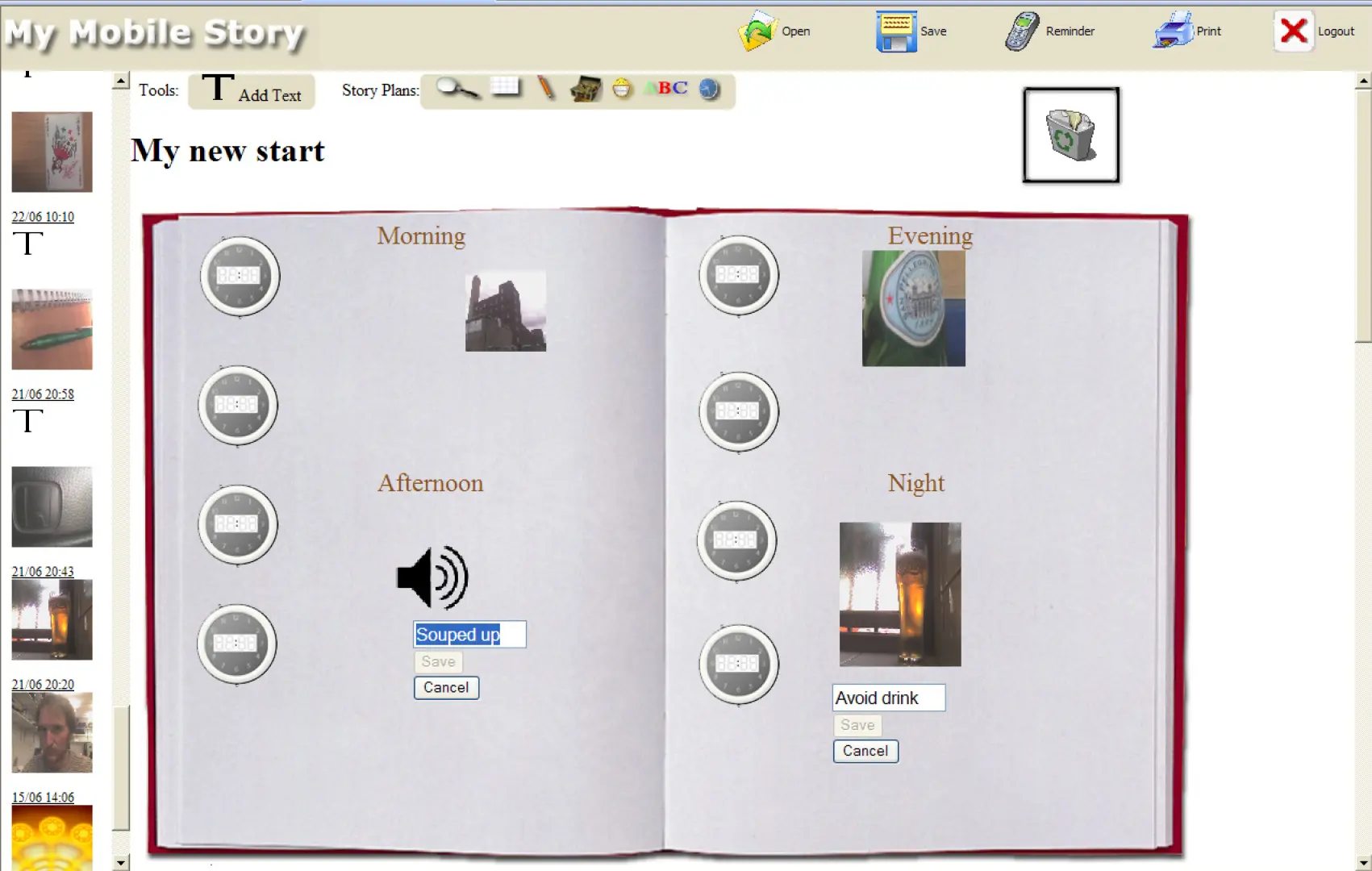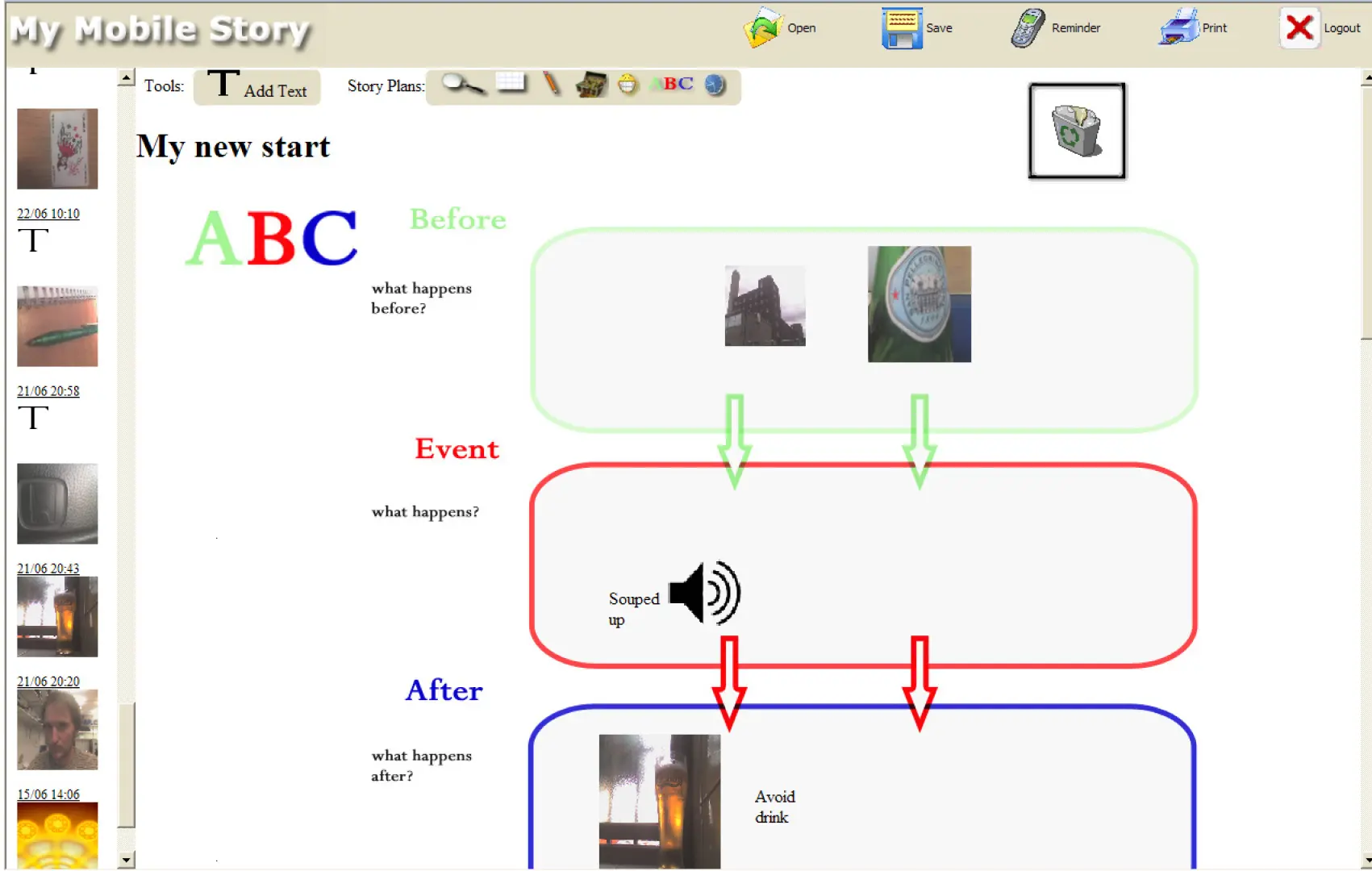The telling and re-telling of personal stories is a fundamental aspect of many mental health interventions. In this project a system has been developed which allows people to us the media capabilities of mobile phones to gather a personal story. Materials gathered on a mobile phone (e.g. text, images, audio) can then be accessed and organised on a personalised website. By creating structured templates for stories and providing people with ‘missions’ regarding the materials they aim to collect, therapists can help people to begin telling stories in therapeutically beneficial ways.
My Mobile Story was designed to support young people in therapy and specifically to open up conversations with therapists by allowing clients to bring artifacts from their world into therapy. It uses the existing potential of clients’ mobile phones to collect thoughts, photographs of family members, sounds and videos of their life and music that they like. Clients can then use the desktop tool with a therapist to discuss and structure this content in a therapeutically meaningful manner. There are preexisting therapeutic plans that they can choose from.
My Mobile Story was designed in close collaboration with therapists. It aimed to support the emerging practice discovered through interviews and discussions with therapists, of clients using their phone to support conversations they were having with their therapist. Therapists reported incidents where a client was talking about a friend and they spontaneously produced their phone to show a photograph of them - or were talking about their favourite band and would play a song on their phone.
My Mobile Story enabled young people to send multimedia content from their phones to an online program. It was built using an MMS gateway, Javscript (for the interactive and collaborative storytelling with the collected media), PhP, MySQL and Perl. Using this program, they could view and structure this content with their therapist. Pictures could be moved around, re-sized and rotated. Sounds and videos could be played and moved around the screen. There is a drawing tool which could be used to decorate the client’s story. There was a selection of pre-defined therapeutic plans that can be chosen from a drop-down list on the right. At the end of a session, the work could be saved to be continued at the next session or at home between sessions. SMS messages could be set up to send “missions” or reminders to the client’s phone at a chosen time each day. Clients could also upload content from their computer.
Articles
Matthews, M., & Doherty, G. (2011). My mobile story: therapeutic storytelling for children. In CHI’11 Extended Abstracts on Human Factors in Computing Systems (pp. 2059-2064).








